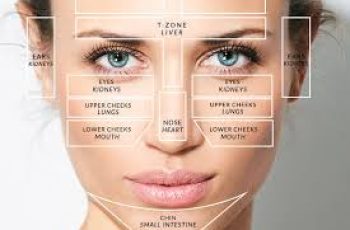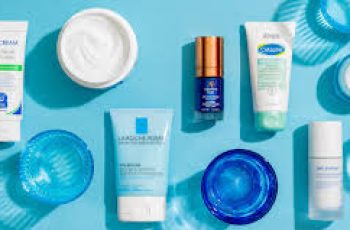
The Science of Ashwagandha Root Extract in Skin Care: Benefits, Risks, and Top Product Picks
Ashwagandha root, scientifically known as Withania somnifera and colloquially referred to as Indian Ginseng, is an ancient herb that has surged in popularity across the wellness and skincare industries.
Traditionally used in Ayurvedic medicine for thousands of years to promote vitality, reduce stress, and support the body’s natural defense mechanisms, Ashwagandha is now being embraced for its skin-transforming potential.
In this comprehensive guide, we explore the scientific foundation of Ashwagandha root extract in skincare.
We’ll examine its active compounds, delve into its skin benefits, review possible side effects, and suggest top skincare products that harness its power.
Whether you’re a skincare enthusiast or a practitioner looking to recommend science-backed botanicals, this article will provide everything you need to know about this unique plant extract.
What Is Ashwagandha Root Extract?
Ashwagandha (Withania somnifera) is a small shrub native to the dry regions of India, the Middle East, and parts of Africa.
The root and leaves of this plant have been used for centuries in Ayurvedic healing practices for their adaptogenic properties—that is, their ability to help the body adapt to stress.
In skincare, Ashwagandha root extract is prized for its multi-functional profile: antioxidant, anti-inflammatory, moisturizing, and anti-aging properties are all part of the equation.
It is commonly found in serums, creams, and skin-brightening products where it supports skin health at a cellular level.
Key Compounds in Ashwagandha Root Extract and Their Functions
What makes Ashwagandha such a powerful skin care ingredient? The answer lies in its unique blend of bioactive compounds. Each plays a distinct role in enhancing skin health:
1. Withanolides
Withanolides are naturally occurring steroidal lactones found almost exclusively in the Withania somnifera plant.
These compounds possess strong anti-inflammatory and antioxidant activity, making them ideal for treating irritated or inflamed skin.
They also help to improve cellular structure and resilience, which can contribute to firmer, more elastic skin over time.
2. Tannins
Tannins are polyphenolic compounds known for their astringent properties. In skincare, tannins help to tighten the skin, reduce oiliness, and minimize the appearance of pores.
Additionally, they provide antioxidant and collagen-boosting benefits, making them useful in anti-aging formulations.
3. Flavonoids
Flavonoids are among the most widely researched plant chemicals. Quercetin, kaempferol, and other flavonoids found in Ashwagandha exhibit antioxidant, anti-inflammatory, and anti-microbial properties. Some flavonoids are also known to inhibit tyrosinase, an enzyme involved in melanin production—helping to even out skin tone and reduce hyperpigmentation.
4. Essential Fatty Acids
Ashwagandha root contains lipids such as myristic acid, palmitic acid, linoleic acid, and linolenic acid. These fatty acids are essential for maintaining a healthy skin barrier.
They help lock in moisture, repair damaged skin, and protect against environmental aggressors like pollution and UV rays.
Top Skin Benefits of Ashwagandha Root Extract
Ashwagandha root extract offers a wide spectrum of benefits that make it an ideal ingredient for all skin types, including sensitive, mature, and acne-prone skin.
Here are the core benefits backed by research:
1. Potent Antioxidant Protection
Oxidative stress caused by environmental aggressors like UV rays, pollution, and free radicals is a major contributor to skin aging.
Ashwagandha is loaded with antioxidants that neutralize free radicals, helping to prevent premature aging, fine lines, and loss of elasticity.
2. Anti-Inflammatory Action
Inflammation is a root cause of many common skin conditions such as acne, eczema, and rosacea.
The withanolides and flavonoids in Ashwagandha extract help reduce inflammation and redness, promoting a calmer, more even-toned complexion.
3. Anti-Aging Benefits
Ashwagandha helps to stimulate DHEA (dehydroepiandrosterone) production, a hormone that contributes to the production of natural skin oils and hydration.
As skin ages and oil production decreases, Ashwagandha can help restore suppleness and elasticity.
4. Skin Brightening
Thanks to its tyrosinase-inhibiting properties, Ashwagandha extract can help fade dark spots and hyperpigmentation, resulting in a more luminous and even-toned complexion.
5. Stress-Related Skin Relief
As an adaptogen, Ashwagandha helps the body better manage internal stress, which can manifest on the skin as irritation, breakouts, and dullness.
Topically, it helps buffer the skin from the effects of cortisol and environmental stressors, improving resilience over time.
Is Ashwagandha Safe for Topical Use?
For the majority of users, topical application of Ashwagandha root extract is safe and well-tolerated.
It is considered non-comedogenic, meaning it does not clog pores, and it’s suitable for a variety of skin types—from oily and acne-prone to dry and aging.
However, as with any active botanical ingredient, some individuals may experience:
Mild allergic reactions, such as redness or itching
Skin sensitivity or irritation, especially in those with reactive skin
Photosensitivity, though rare, may occur, making daily SPF use essential
To avoid complications, it’s best to perform a patch test before introducing any new product into your skincare routine.
Apply a small amount behind the ear or on the inner arm and monitor for 24 hours.
Precautions for Specific Populations
Although topical Ashwagandha is generally safe, there are special considerations for certain groups:
Pregnant or breastfeeding women: While topical use is not known to pose significant risks, it’s advisable to consult with a healthcare provider before using products containing Ashwagandha.
People with autoimmune conditions:
Since Ashwagandha may affect immune function when ingested, it’s worth checking with a medical professional before use—especially if taking oral supplements or using highly concentrated topical formulas.
Featured Product: Alastin Skincare Aluminate Brightening Serum
One of the standout products utilizing Ashwagandha root extract is Alastin Skincare’s Aluminate Brightening Serum.
This advanced formula combines Withania somnifera root extract with other brightening and anti-aging ingredients to:
Diminish dark spots and uneven tone
Improve skin clarity and radiance
Defend against environmental stressors
Alastin is known for its science-backed formulations and physician-recommended products, making this serum a trustworthy option for incorporating Ashwagandha into your routine.
Other Notable Products Featuring Ashwagandha
In addition to Alastin’s offering, many clean beauty and cosmeceutical brands are formulating with Ashwagandha root extract, such as:
Herbivore Botanicals Moon Fruit Serum
Juice Beauty Stem Cellular Anti-Wrinkle Moisturizer
True Botanicals Clear Nourishing Cleanser
When selecting a product, look for phrases like “Withania somnifera root extract” or “Ashwagandha” in the ingredients list.
Higher concentrations, especially when combined with lipids or ceramides, often enhance efficacy.
How to Incorporate Ashwagandha into Your Routine
Ashwagandha root extract can be used in several steps of your skincare regimen, including:
Cleansers for calming inflamed or acne-prone skin
Serums for concentrated delivery of antioxidants and brightening agents
Moisturizers for locking in hydration and repairing the barrier
Face oils rich in lipids for overnight repair
Pro tip: Pair Ashwagandha products with ingredients like niacinamide, hyaluronic acid, or green tea extract to amplify their anti-inflammatory and brightening effects.
Final Thoughts: Is Ashwagandha Worth It in Skincare?
Absolutely. Ashwagandha root extract is one of the most versatile botanical ingredients available in modern skincare.
Its combination of anti-aging, anti-inflammatory, antioxidant, and moisturizing effects makes it ideal for improving overall skin health and resilience.
With few side effects and benefits that span across skin types, it’s an ingredient that deserves a place in both daily and targeted skin care routines.
Thank You Gift: 20% Off Your Next Order
As a thank you for being part of our educational community, we’re offering 20% off your next order when you use the code STSBlog20 at checkout.
Explore the benefits of Ashwagandha-infused skincare products and see the difference for yourself—your skin will thank you.


